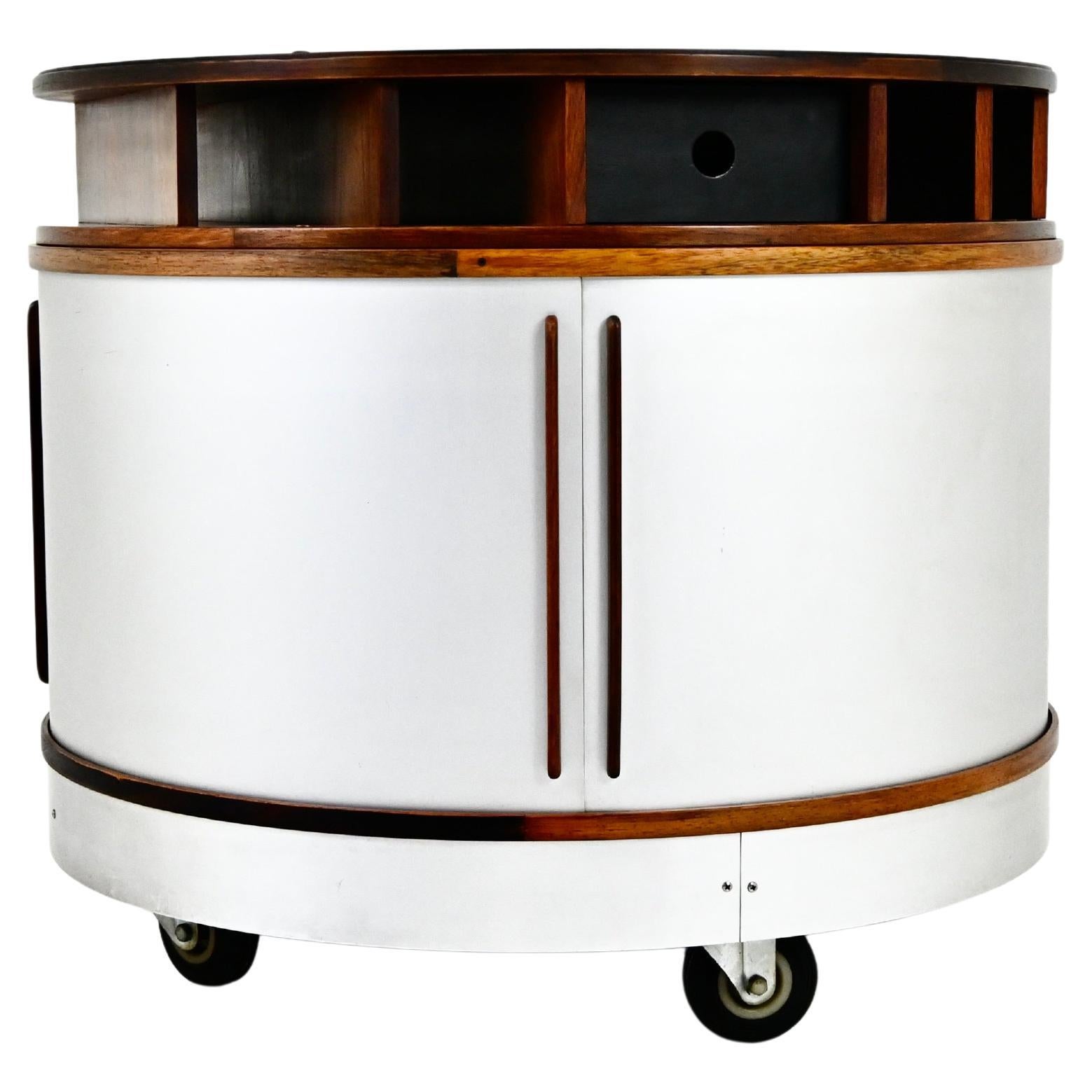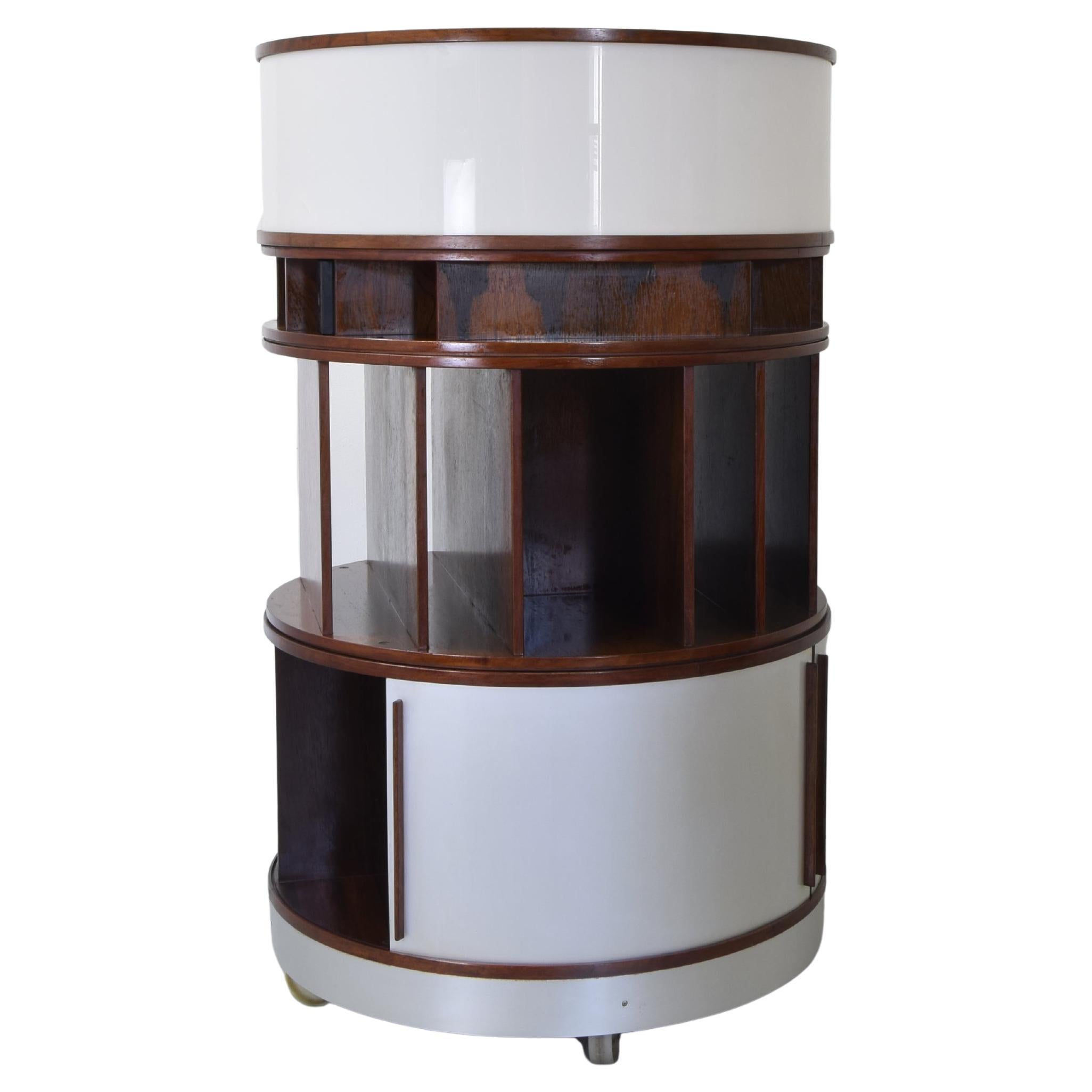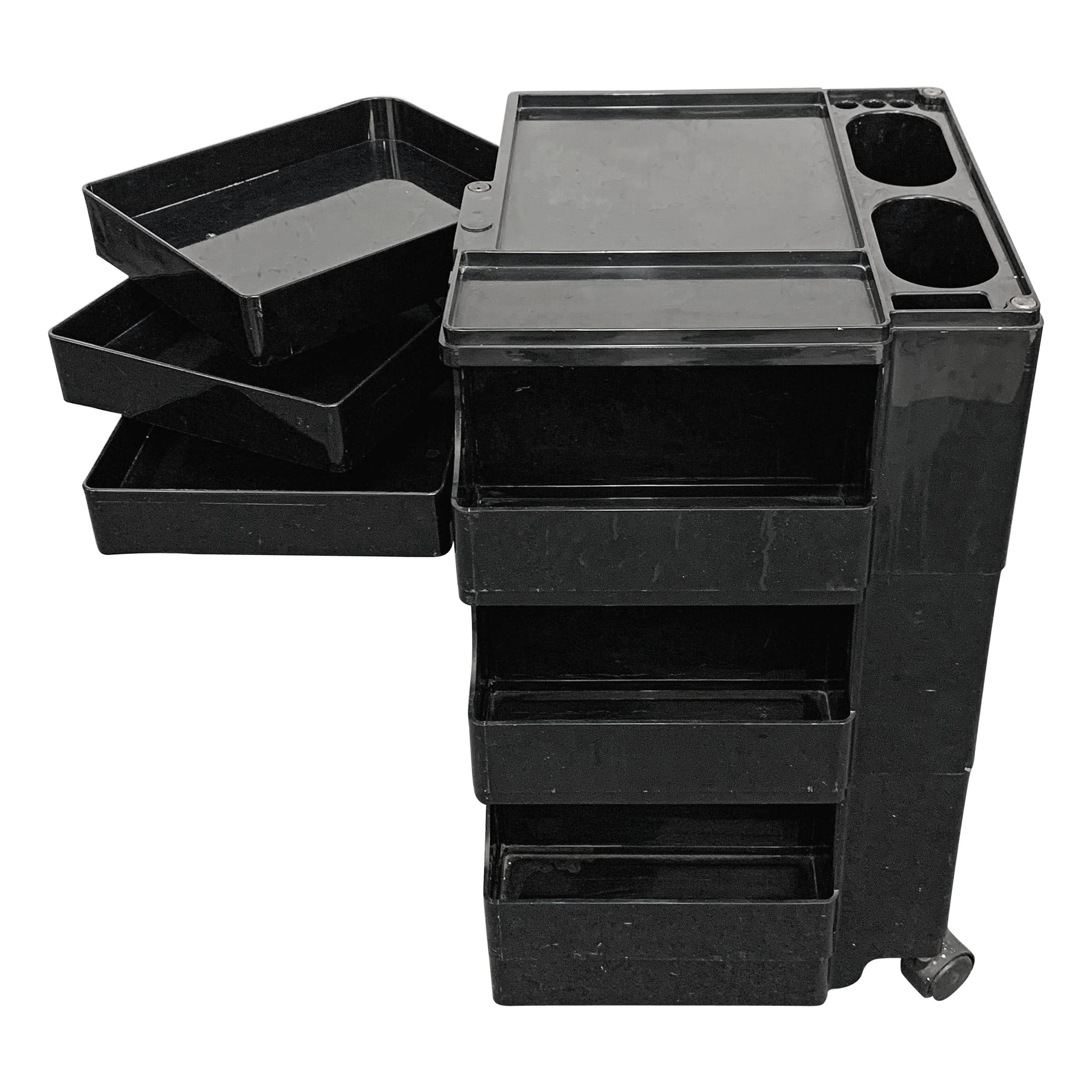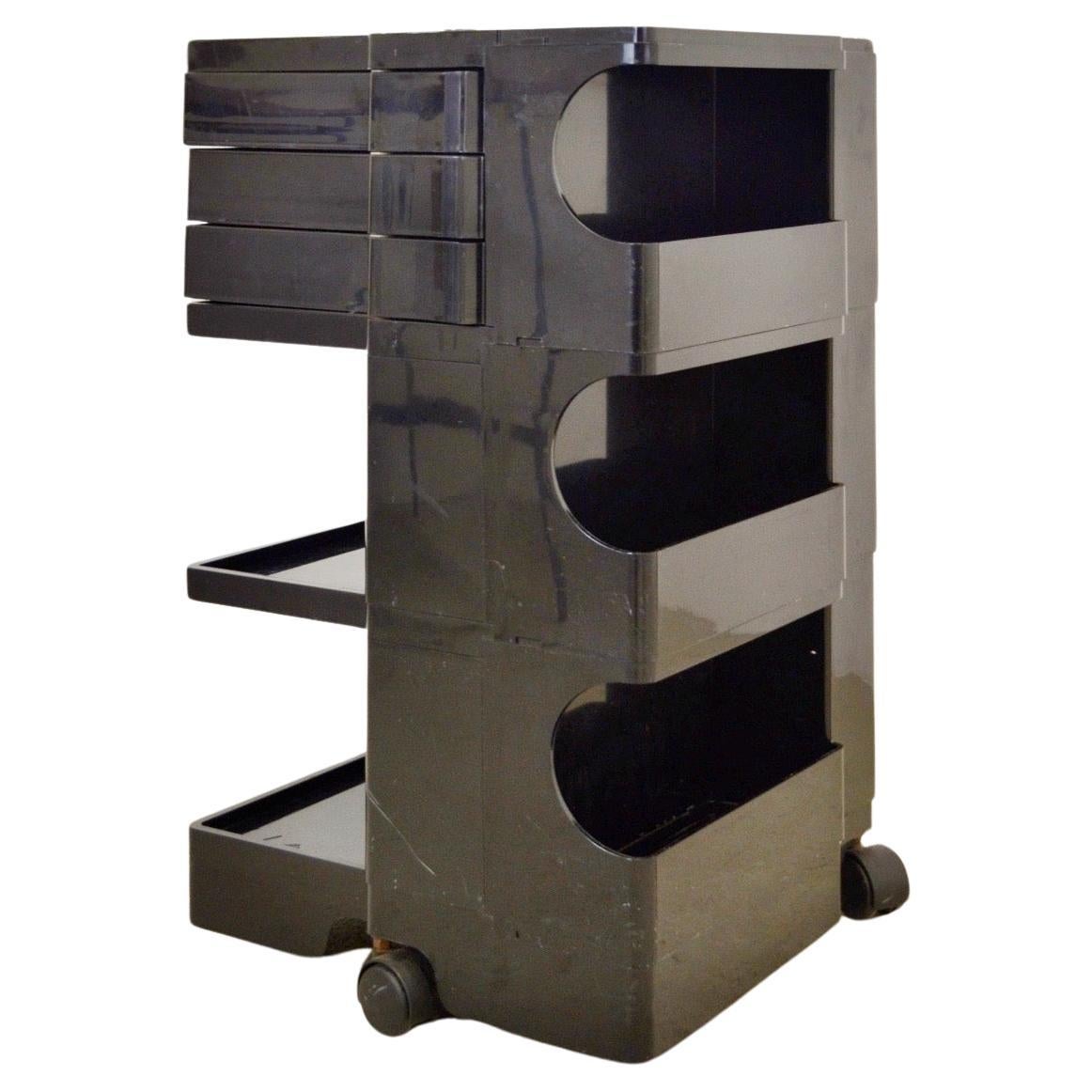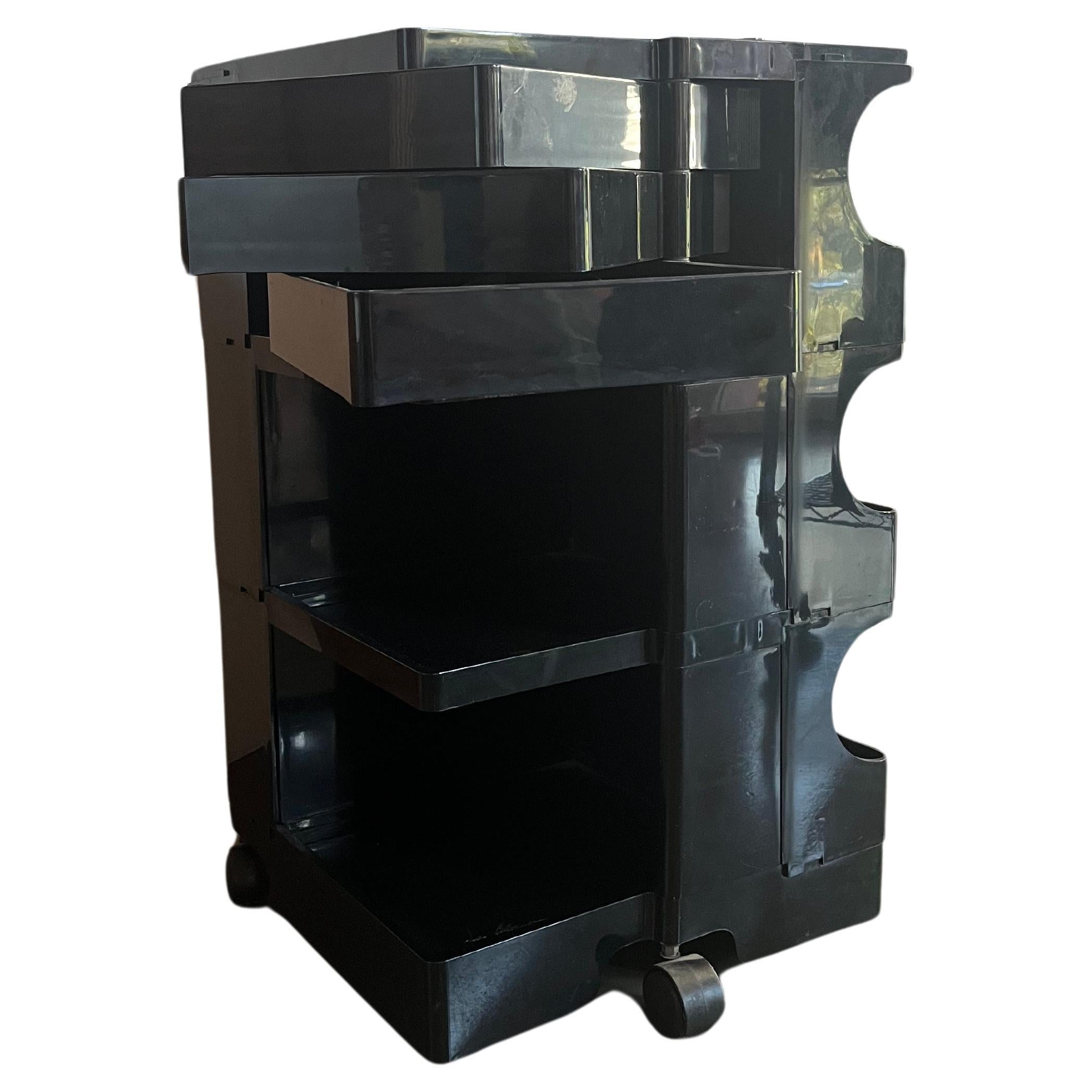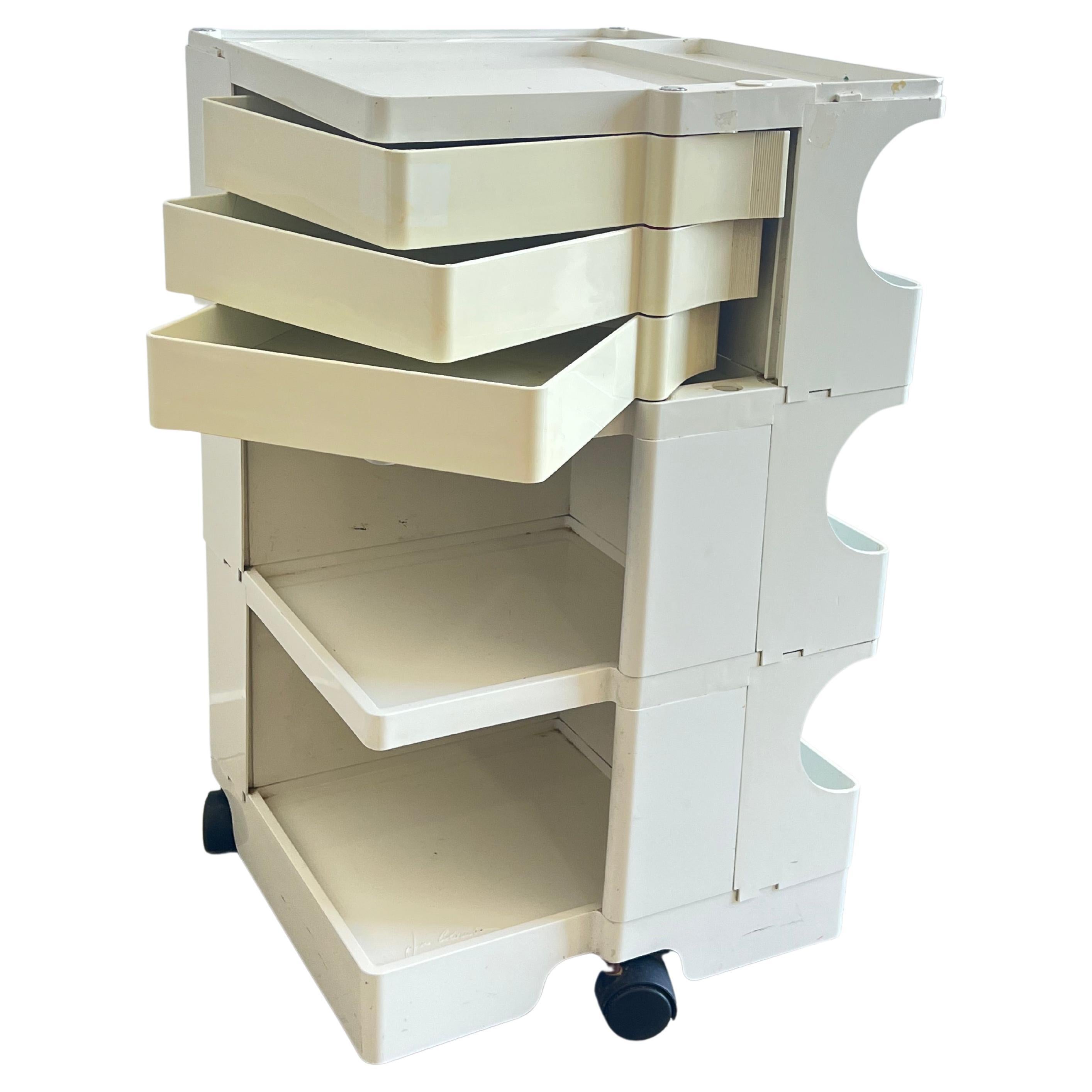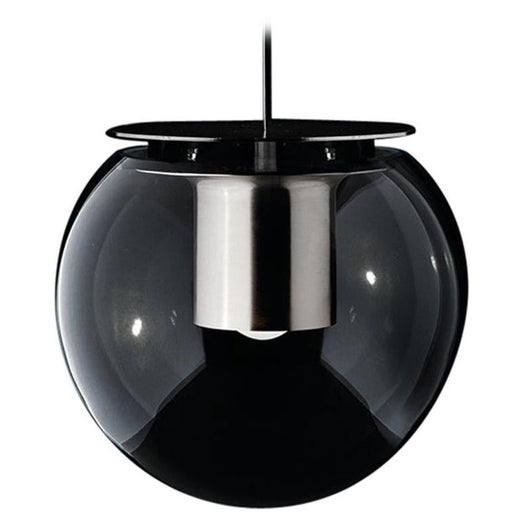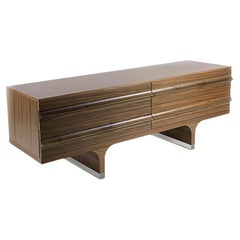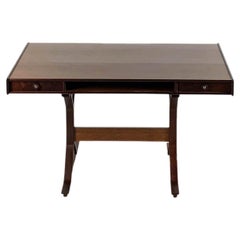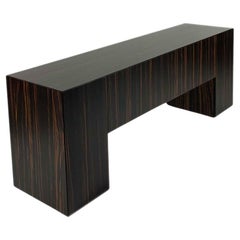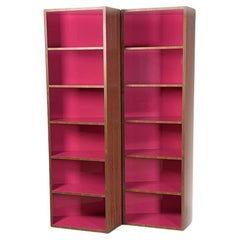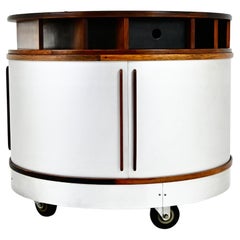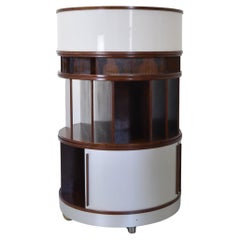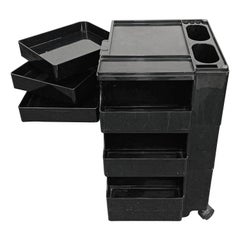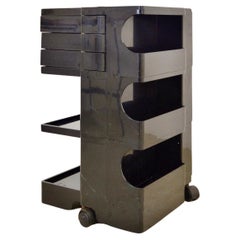Joe Colombo's Combi Center storage unit for Bernini 1963/1997.
About the Item
- Creator:Joe Colombo (Designer)
- Design:
- Dimensions:Height: 63.78 in (162 cm)Diameter: 33.47 in (85 cm)
- Materials and Techniques:
- Place of Origin:
- Period:
- Date of Manufacture:1997
- Condition:In excellent condition, never used in a domestic setting and solely displayed as a showroom piece by a retailer.
- Seller Location:Misinto, IT
- Reference Number:1stDibs: LU9226242421962
Joe Colombo
He died tragically young, and his career as a designer lasted little more than 10 years. But through the 1960s, Joe Colombo proved himself one of the field’s most provocative and original thinkers, and he produced a remarkably large array of innovative chairs, table lamps and other lighting and furniture as well as product designs. Even today, the creations of Joe Colombo have the power to surprise.
Cesare “Joe” Colombo was born in Milan, the son of an electrical-components manufacturer. He was a creative child — he loved to build huge structures from Meccano pieces — and in college he studied painting and sculpture before switching to architecture.
In the early 1950s, Colombo made and exhibited paintings and sculptures as part of an art movement that responded to the new Nuclear Age, and futuristic thinking would inform his entire career. He took up design not long after his father fell ill in 1958, and he and his brother, Gianni, were called upon to run the family company.
Colombo expanded the business to include the making of plastics — a primary material in almost all his later designs. One of his first, made in collaboration with his brother, was the Acrilica table lamp (1962), composed of a wave-shaped piece of clear acrylic resin that diffused light cast by a bulb concealed in the lamp’s metal base. A year later, Colombo produced his best-known furniture design, the Elda armchair (1963): a modernist wingback chair with a womb-like plastic frame upholstered in thick leather pads.
Portability and adaptability were keynotes of many Colombo designs, made for a more mobile society in which people would take their living environments with them. One of his most striking pieces is the Tube chair (1969). It comprises four foam-padded plastic cylinders that fit inside one another. The components, which are held together by metal clips, can be configured in a variety of seating shapes (his Additional Living System seating is similarly versatile).
Vintage Tube chairs generally sell for about $9,000 in good condition; Elda chairs for about $7,000. A small Colombo design such as the plastic Boby trolley — an office organizer on wheels, designed in 1970 — is priced in the range of $700.
As Colombo intended, his designs are best suited to a modern decor. If your tastes run to sleek, glossy Space Age looks, the work of Joe Colombo offers you a myriad of choices.
Find vintage Joe Colombo lamps, seating and other furniture for sale on 1stDibs.
- ShippingRetrieving quote...Shipping from: Misinto, Italy
- Return Policy
More From This Seller
View AllEarly 2000s Italian Dressers
Plexiglass, Nutwood
Antique 1850s Italian Desks
Nutwood
Early 2000s Italian Credenzas
Ebony
Early 2000s Italian Bookcases
Laminate, Hickory
Vintage 1970s Italian Chairs
Other
Vintage 1960s Italian Dining Room Tables
Nutwood
You May Also Like
Vintage 1960s Italian Mid-Century Modern Cabinets
Aluminum
Vintage 1960s Italian Mid-Century Modern Cabinets
Aluminum
Vintage 1960s Italian Mid-Century Modern Commodes and Chests of Drawers
Plastic
Vintage 1960s Italian Modern Cabinets
Plastic
Vintage 1980s Italian Modern Cabinets
Plastic
Vintage 1960s Italian Mid-Century Modern Cabinets
Plastic
